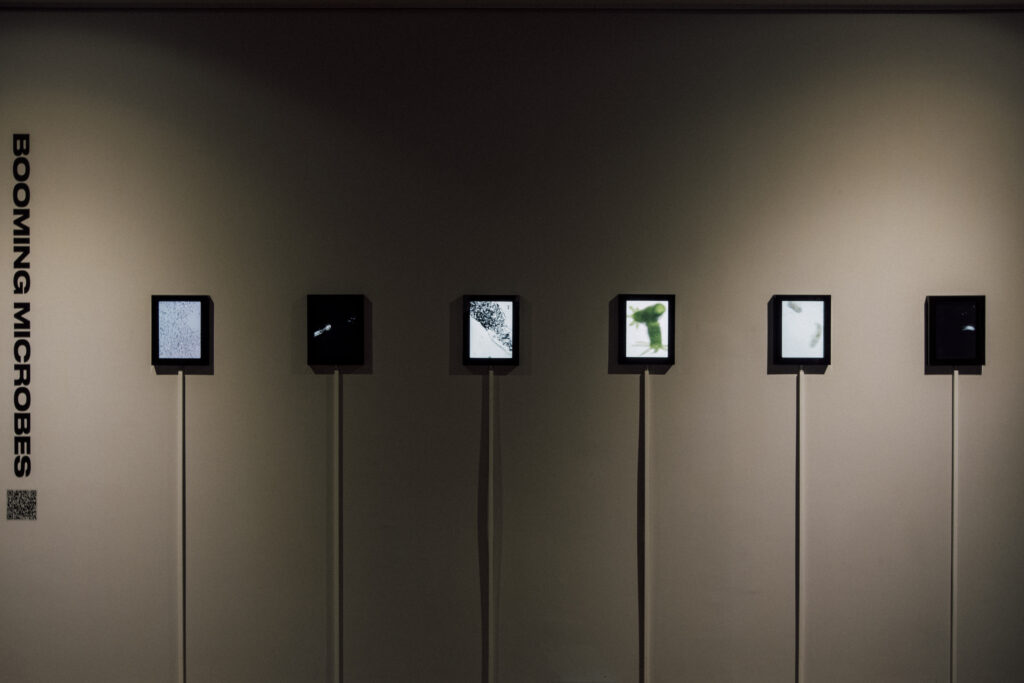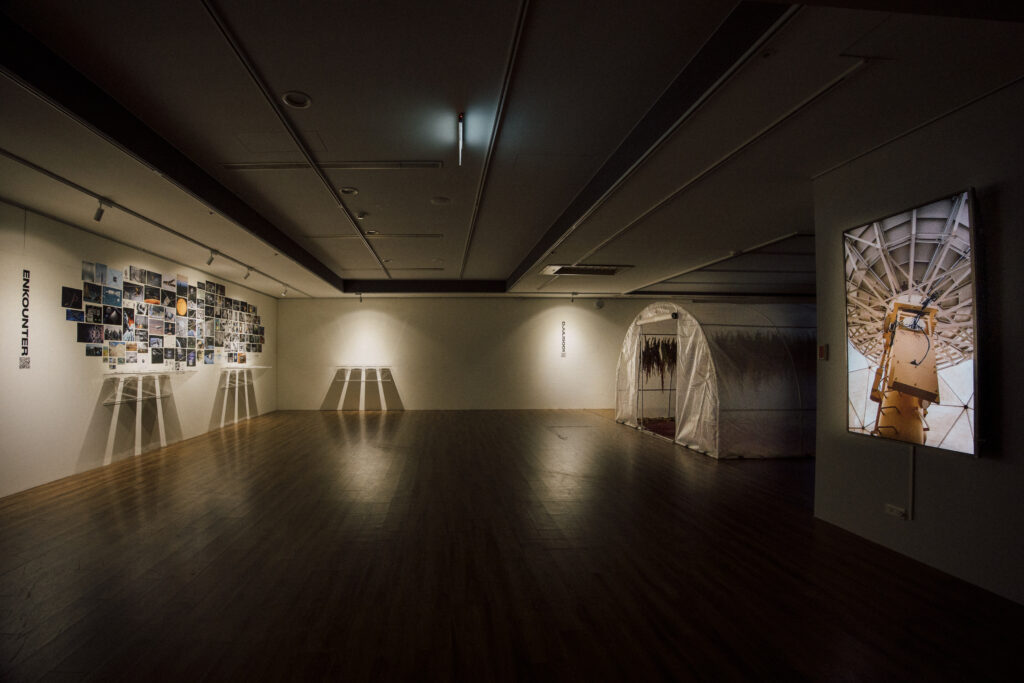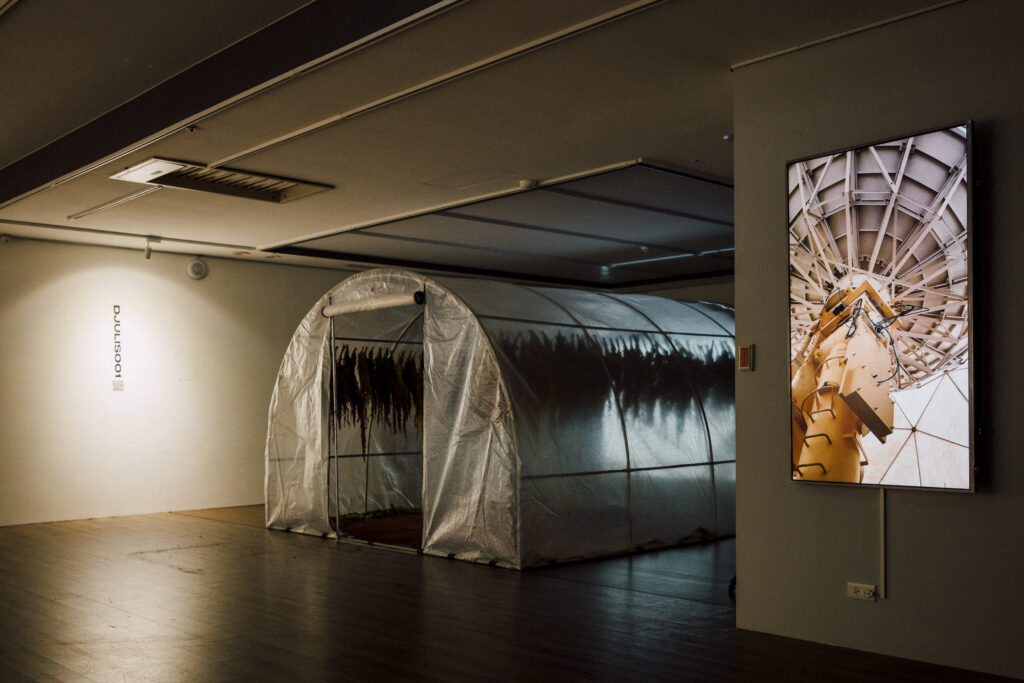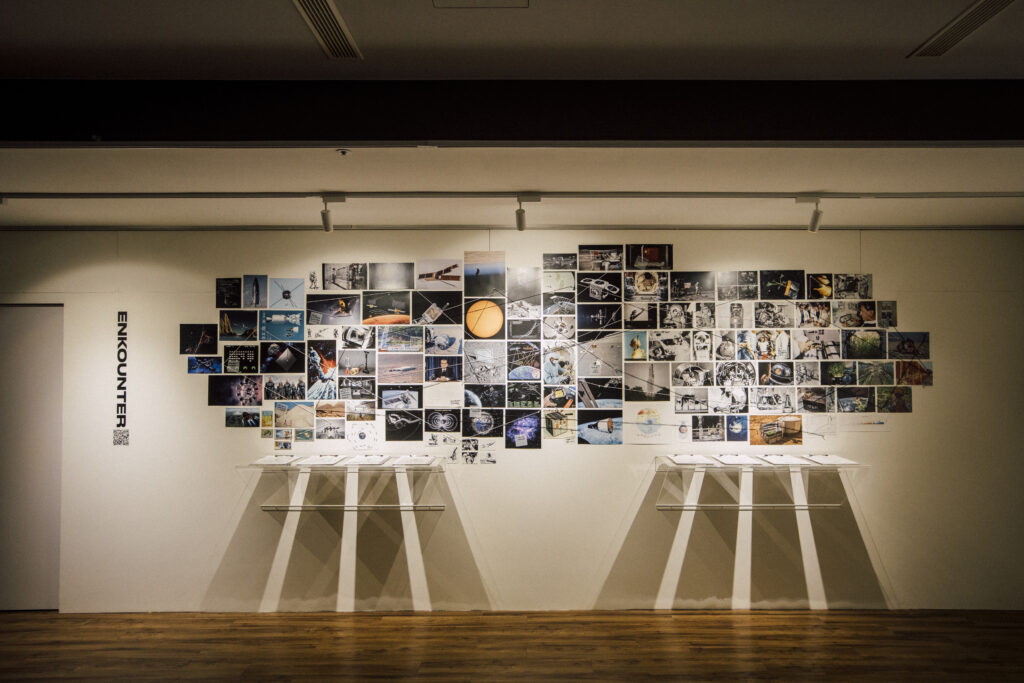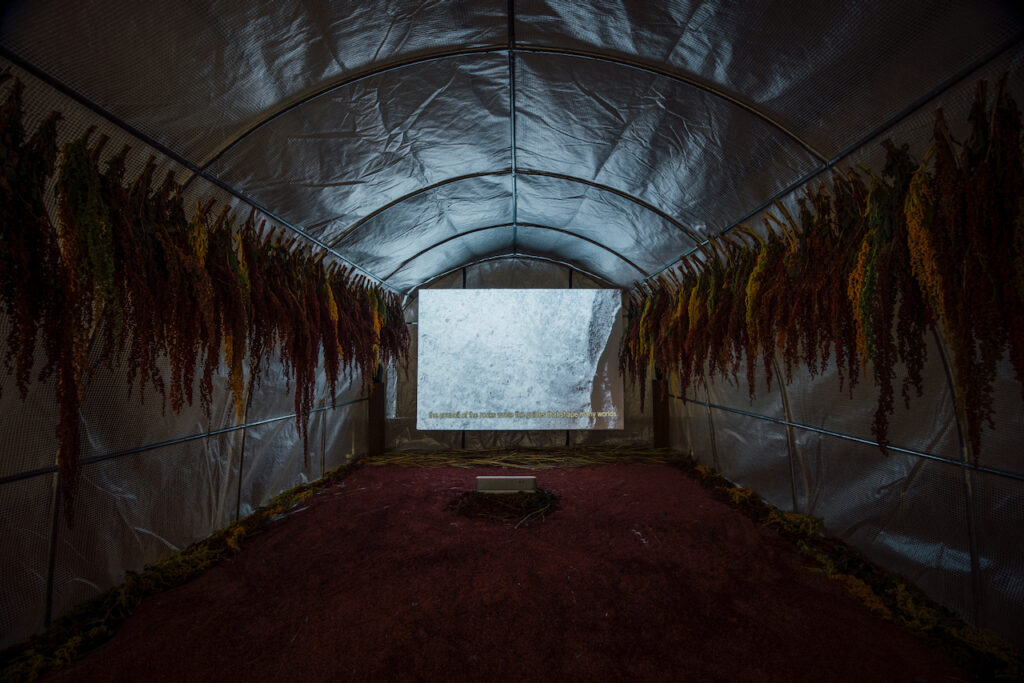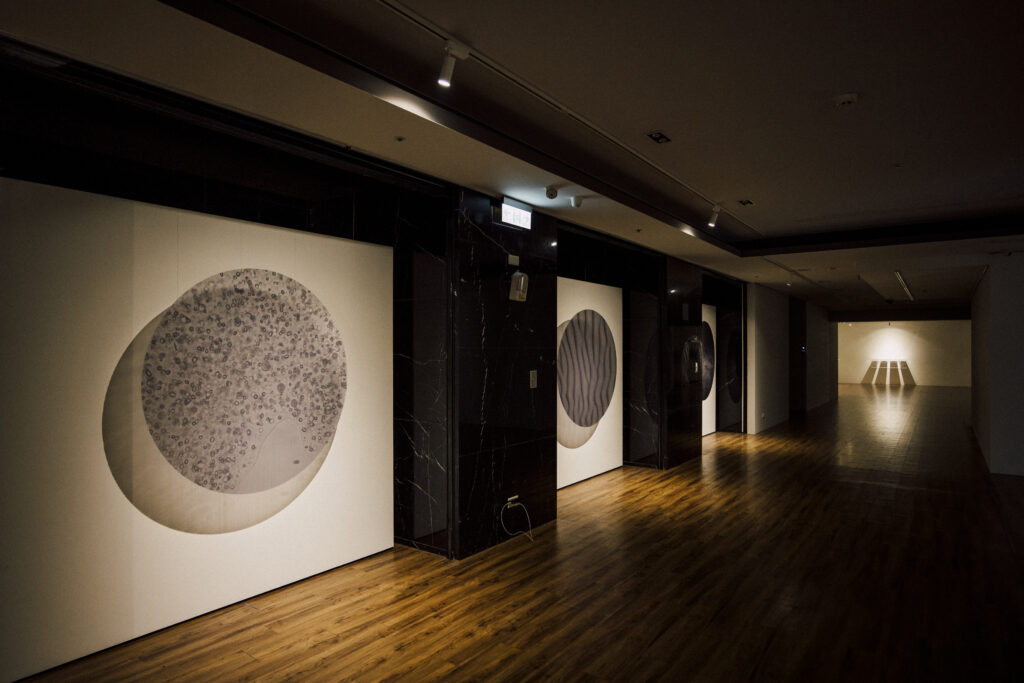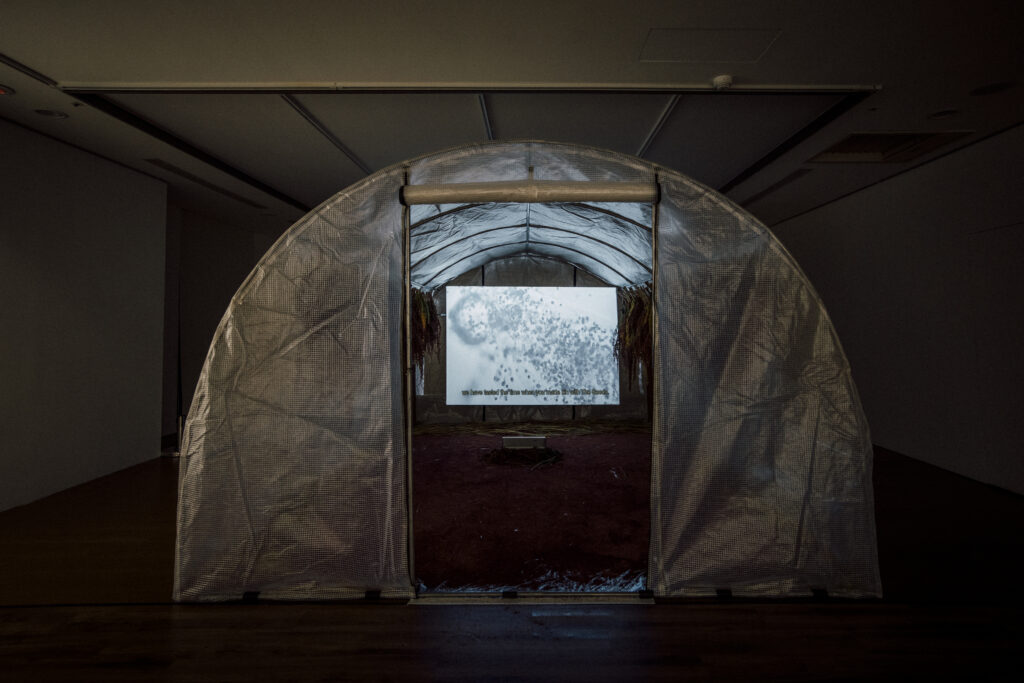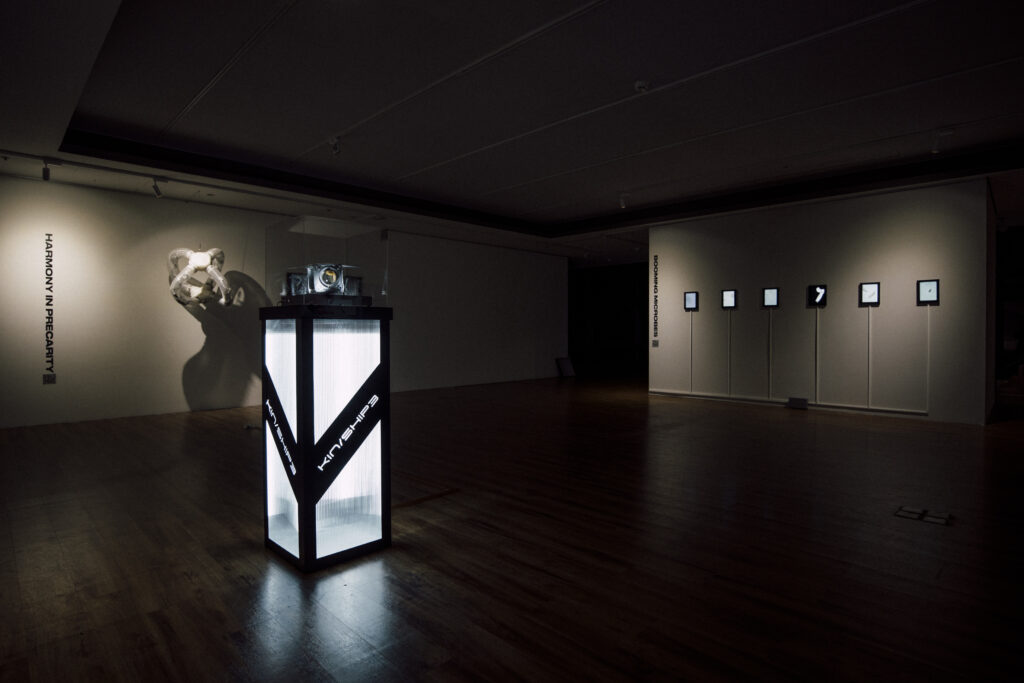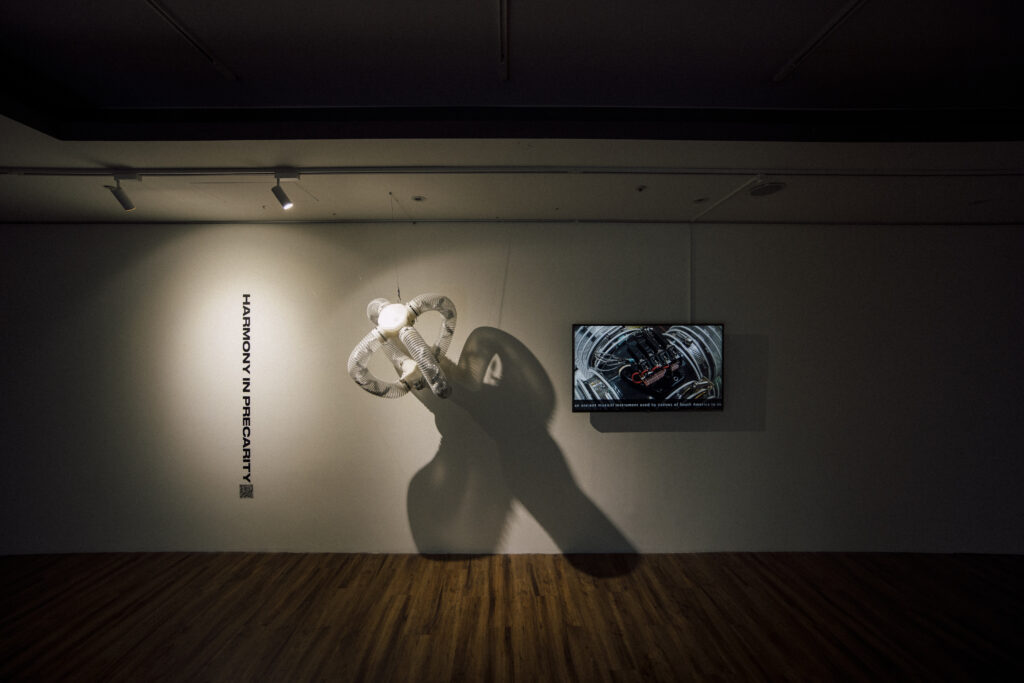
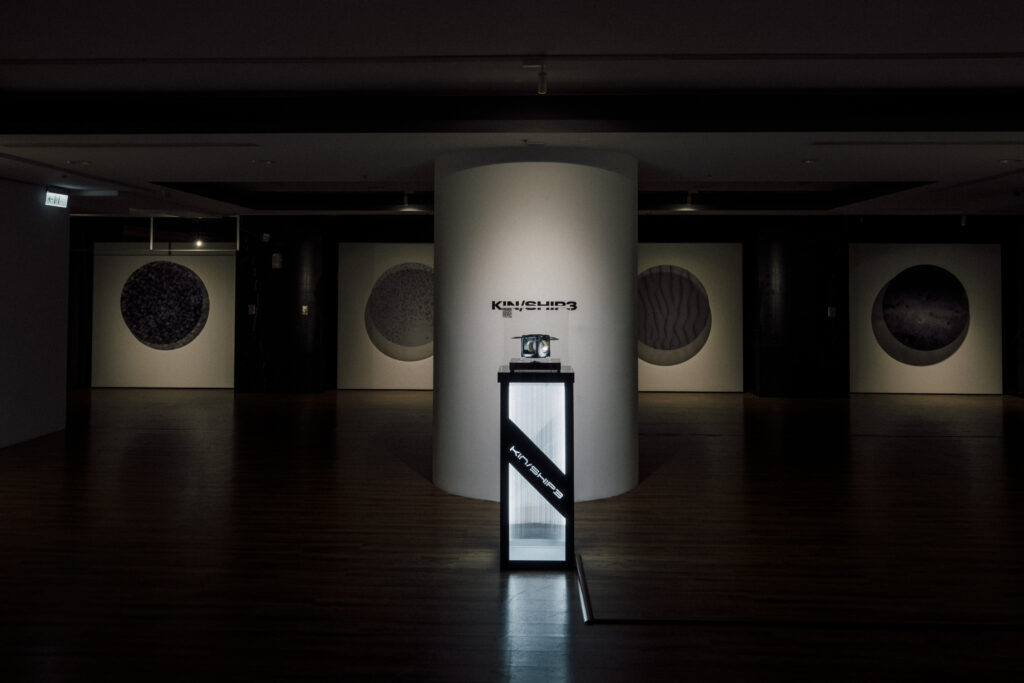
Project Description
“3000 Years Among Microbes” speculates on an alternative space future through rapidly evolving technologies from the microbial to the planetary scale, with the logic of “symbiosis” and “kinship.” The project’s title comes from an unpublished manuscript by American writer Mark Twain in 1905. The story is about a microbiologist mistakenly turned into a bacteria by a magician and observed the world from a nonhuman perspective that retained its human memory.
Inspired by this story, the team took a microbial perspective and created a fictional character of extremophile bacteria that inhabits Mars. One day, parts repairmen in a space center boarded a “space colonization” rocket and stowed away from the post-climate Earth to Mars. After landing, they ran opposite the space city, left the jurisdiction, and found a foothold, where they met the story’s protagonist. During the “contact,” a process that could not be described in words, the extremophile bacteria recognized ancestor bacteria belonging to the same species in the microbiome of the girl’s intestines. This first contact is different from previous ones, portraying a cosmic view of interdependence on a challenging scale to observe with the naked eye. How do these two life forms embrace or hurt each other in the reunion story between the Mars indigenous and the “human” ancestor bacteria? What kind of training would astronauts with this cosmology receive, and how would they live in symbiosis with other species? We must remember that symbiosis is not a peaceful transaction, and survival inevitably involves discussion, conflict, and collaboration.
Drawing on science fiction literature, emerging technologies, and post-human perspectives, the project opens up a series of discussions on framing space exploration outside the metaphor of colonization through prototyping, experimental videos, space simulations, online platforms, and stakeholder interviews.
During project development, Zone Sound Creative studio and artists visited the Taiwan National Space Organization and a NASA lunar mock-up base in the Western Desert during the 1960s space race, filmed on locations, and collected microbial samples. Juxtaposing extreme landscapes with microscopic images blurs the distinction between humans and microbes and further replaces the human “individual” definition with the concept of “holobiont.”
Donna Haraway, the American postmodernist scholar who proposed A Cyborg Manifesto, argues that the construction of “kinship” is not limited to blood relatives and humans but that many nonhuman entities will also be involved. “3,000 Years Among Microbes” is a test of imagination that considers how humans should approach space exploration (colonization), remembering the lessons of the Anthropocene and embedding the concept of symbiosis in the vision of interstellar ecosystems. Since space exploration is highly relevant to the arms race, geopolitics, and economic interests, we hope to propose a new language when the “space age” is no longer a fantasy. It should be a language distinguished from metaphors of colonization, as commercialization turns the universe into a “new frontier” waiting for exploration. From climate change to the wealth gap, we have seen how difficult it is to solve these human-generated problems. In space, we can make better choices right from the start.
製作團隊 Credits
藝術家Artists |徐叡平 Rae Hsu 、紀柏豪 PoHao Chi、Nancy Valladares
創作協力Supporting Artist |Chucho Ocampo
衛星模型設計製作 CubeSat Installtion|陳湘馥 Hsiangfu Chen
空拍指導Aerial Photography Guide|Maggie Coblentz
攝影協力(臺灣)Supporting Photography (Taiwan)|張耀翔 Yaoxiang Zhang
專案執行 Project Mannager|賴慧珈 Caitlin Lai
行政協力Administrate Support|陳旻靖 MinChing Chen
展場設計 Exhibition Design|賴慧珈 Caitlin Lai
視覺設計 Visual Design|吳瑞桓 TRACY’S
網站設計 Website Design | 賴慧珈 Caitlin Lai
展務執行 Exhibition Execute|詹若禾 RuoHe Jhan
計畫顧問 Project Consultant|Maggie Coblentz、Ariel Ekblaw、Danielle Wood
贊助 Sponsor|Taiwan Ministry of Culture

